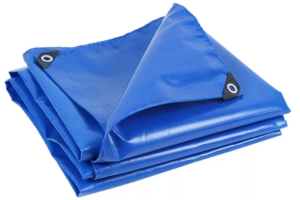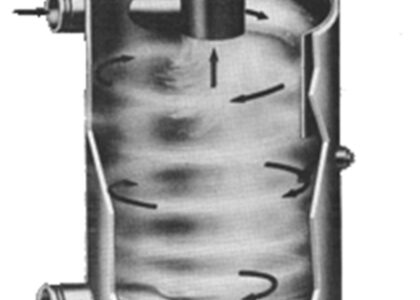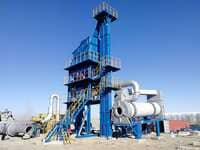
The tarpaulin sheets market share analysis has been experiencing significant growth in recent years, driven by increasing demand across various industries for durable, versatile, and eco-friendly solutions. This market, which is expected to exceed USD 14.3 billion by 2035, with a compound annual growth rate (CAGR) of 4.7%, is poised for continued expansion.
As sectors like agriculture, construction, logistics, and consumer goods rely heavily on tarpaulin sheets for protection, coverage, and other essential purposes, manufacturers are working tirelessly to introduce advanced products that meet the evolving needs of these industries.
Unlock Growth Potential – Request Your Sample Now and Explore Market Opportunities!
https://www.futuremarketinsights.com/report-sample#5245502d47422d2e3230333337
Tarpaulin sheets, commonly referred to as tarps, are large, flexible, and durable sheets made from materials like polyethylene, polypropylene, and PVC. These sheets are used for a wide range of applications, primarily in protecting items from the elements such as rain, dust, and sun. They are most commonly seen in construction sites, agricultural fields, logistics companies, and even households for outdoor coverage.
Manufacturers often customize tarpaulin sheets to suit specific industry needs, with options for waterproofing, UV resistance, and fire retardancy. The strength and reliability of tarps make them ideal for use in harsh environments, providing protection for equipment, vehicles, products, and raw materials across diverse sectors.
Key Takeaways From the Tarpaulin Sheets Market Share Analysis
- North America holds a 30% market share, driven by sustainability trends and growing industrial needs.
- Europe leads with 35% market share, supported by strong recycling infrastructure and green regulatory policies.
- Asia-Pacific accounts for 25%, fueled by rapid industrialization and rising agricultural applications.
- Other regions collectively represent 10%, with demand increasing for affordable and durable tarpaulin solutions.
Increasing Demand for Multi-Utility Coverage Solutions
One of the key drivers propelling the growth of the tarpaulin sheets market is the rising need for multi-utility covering solutions. These sheets serve a wide variety of applications, from protecting crops and construction materials to covering goods during transportation. Their waterproof and UV-resistant properties make them ideal for both indoor and outdoor use.
The adaptability of tarpaulin sheets has positioned them as a cost-efficient substitute for conventional covers. In regions with volatile weather patterns, they offer reliable protection against rain, sun, dust, and wind—making them indispensable in both rural and urban settings.
Material Innovations Leading to Lightweight and Durable Products
Modern tarpaulin sheets are benefiting from innovations in polymer technology, leading to stronger yet lighter materials. Manufacturers are moving away from traditional heavy-duty polyethylene and introducing high-density polyethylene (HDPE) and polyvinyl chloride (PVC) blends that enhance product strength while reducing weight.
Lightweight tarpaulins not only improve portability and handling but also lower shipping costs, contributing to supply chain efficiency. These innovations also open opportunities for new applications in portable shelters, emergency relief, and do-it-yourself (DIY) consumer markets.
Rise of Eco-Friendly and Sustainable Tarpaulin Products
Environmental sustainability is at the forefront of material innovation. Rising consumer awareness and stricter regulatory frameworks have prompted companies to invest in eco-friendly alternatives, such as biodegradable polymers and recyclable tarpaulin sheets.
Moreover, many manufacturers are incorporating recycled raw materials into their production processes, contributing to circular economy goals. The use of low-emission manufacturing technologies is also gaining ground, helping reduce the industry’s carbon footprint.
Competitive Landscape
The competitive landscape of the tarpaulin sheets market is marked by a blend of large multinational companies and smaller, specialized manufacturers. Key players are continually improving their product offerings by incorporating new materials, technologies, and features to meet diverse customer needs. Major companies in the market include:
- SRF Limited: Invests in advanced, recyclable materials for industrial applications.
- Heytex: Develops lightweight tarpaulins with UV-resistant coatings.
- Sioen: Focuses on automation and energy-efficient production methods.
Tarpaulin Sheets Market Share Analysis Segmentation
By End-User:
- Construction
- Agriculture
- Logistics
- Consumer Goods
By Region:
- North America
- Europe
- Asia-Pacific
- Other Regions
About Future Market Insights (FMI)
Future Market Insights, Inc. (ESOMAR certified, recipient of the Stevie Award, and a member of the Greater New York Chamber of Commerce) offers profound insights into the driving factors that are boosting demand in the market. FMI stands as the leading global provider of market intelligence, advisory services, consulting, and events for the Packaging, Food and Beverage, Consumer Technology, Healthcare, Industrial, and Chemicals markets. With a vast team of over 400 analysts worldwide, FMI provides global, regional, and local expertise on diverse domains and industry trends across more than 110 countries.
Contact Us:
Future Market Insights Inc.
Christiana Corporate, 200 Continental Drive,
Suite 401, Newark, Delaware – 19713, USA
T: +1-347-918-3531
For Sales Enquiries: sales@futuremarketinsights.com
Website: https://www.futuremarketinsights.com
LinkedIn| Twitter| Blogs | YouTube





